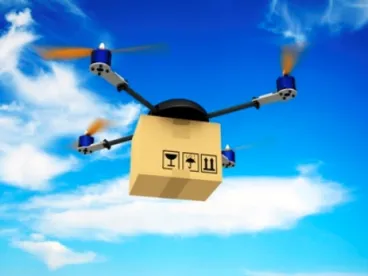The Federal Aviation Administration (FAA) recently released its final rule for small drones, which will become effective in late August of 2016. Some of the highlights of the new rule are:
-
It allows commercial flight of drones weighing less than 55 pounds at a maximum speed of 100 mph below 400 AGL during the daytime as long as they remain within the line of sight of the operator;
-
It does not require you to have a conventional pilot’s license in order to operate a drone;
-
The person flying the drone must be at least 16-years-old and must have a remote pilot airman certificate with a small unmanned aircraft systems rating, or be directly supervised by someone with a certificate;
-
Temporary certificates (pending successful test completion) are available upon application and successful completion of TSA security vetting;
-
Flights over people are prohibited unless they are directly participating in the operation/activity for which the drone is being flown;
-
Night flights and flights under a covered structure are prohibited;
-
Operation of the drone must not pose undue risk to persons or property;
-
It should be noted that certain restrictions within the rule are subject to possible waiver upon application to the FAA; and
-
FAA airworthiness certification of the drone is not required. However, the remote pilot in command must conduct a preflight check of the drone to ensure that it is in a condition for safe operation.
As we reported [Drones: Insurance Coverage Issues] previously, insurance can and should be a part of the business plan for any drone operator or those utilizing drones. The new regulations promptly resulted in changes to insurers’ approaches to underwriting drone-related risks, in some of the following ways:
-
The floodgates are open. Insurers report a dramatic increase in the number of applications for drone-related insurance. Capacity is limited, so the market may tighten as “safe” risk is underwritten quickly.
-
Rather than relying on the FAA’s Section 333 exemptions as a general guidepost for evaluating potential risk, as they had in the past, insurers now engage in a qualitative case-by-case evaluation of insurance applicants. While the process of securing insurance can still be quick, it is slowing.
-
An applicant for drone-related insurance can increase the likelihood of getting lower premium rates and higher limits of insurance by understanding how to package and present the application and accompanying materials.
-
Applicants must exercise caution in making representations during the underwriting process that may come back to haunt them, such as representing that the applicant will follow all applicable laws and regulations at all times.
-
Parties seeking to require vendors, contractors or counter-parties to carry drone-related insurance should understand what is commercially reasonable based on market conditions.



 />i
/>i

